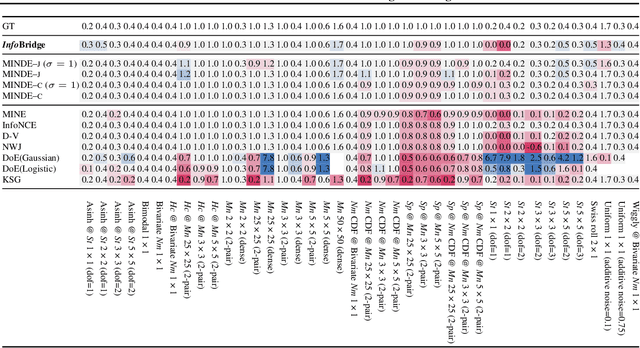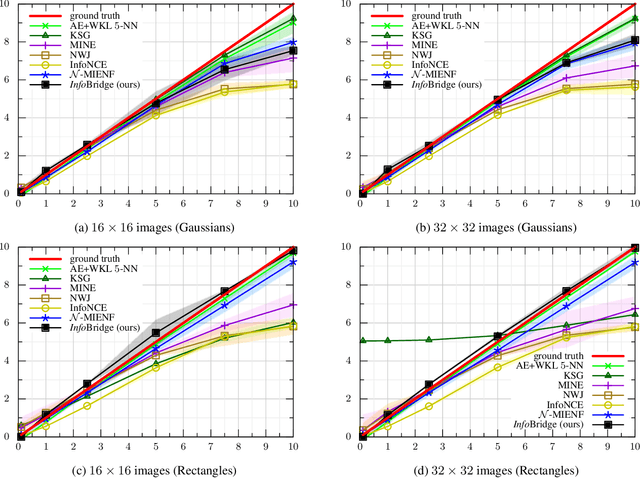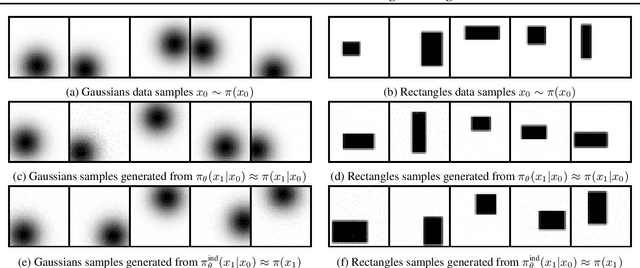Evgeny Burnaev
Lightweight error mitigation strategies for post-training N:M activation sparsity in LLMs
Sep 26, 2025Abstract:The demand for efficient large language model (LLM) inference has intensified the focus on sparsification techniques. While semi-structured (N:M) pruning is well-established for weights, its application to activation pruning remains underexplored despite its potential for dynamic, input-adaptive compression and reductions in I/O overhead. This work presents a comprehensive analysis of methods for post-training N:M activation pruning in LLMs. Across multiple LLMs, we demonstrate that pruning activations enables superior preservation of generative capabilities compared to weight pruning at equivalent sparsity levels. We evaluate lightweight, plug-and-play error mitigation techniques and pruning criteria, establishing strong hardware-friendly baselines that require minimal calibration. Furthermore, we explore sparsity patterns beyond NVIDIA's standard 2:4, showing that the 16:32 pattern achieves performance nearly on par with unstructured sparsity. However, considering the trade-off between flexibility and hardware implementation complexity, we focus on the 8:16 pattern as a superior candidate. Our findings provide both effective practical methods for activation pruning and a motivation for future hardware to support more flexible sparsity patterns. Our code is available https://anonymous.4open.science/r/Structured-Sparse-Activations-Inference-EC3C/README.md .
Universal Inverse Distillation for Matching Models with Real-Data Supervision (No GANs)
Sep 26, 2025Abstract:While achieving exceptional generative quality, modern diffusion, flow, and other matching models suffer from slow inference, as they require many steps of iterative generation. Recent distillation methods address this by training efficient one-step generators under the guidance of a pre-trained teacher model. However, these methods are often constrained to only one specific framework, e.g., only to diffusion or only to flow models. Furthermore, these methods are naturally data-free, and to benefit from the usage of real data, it is required to use an additional complex adversarial training with an extra discriminator model. In this paper, we present RealUID, a universal distillation framework for all matching models that seamlessly incorporates real data into the distillation procedure without GANs. Our RealUID approach offers a simple theoretical foundation that covers previous distillation methods for Flow Matching and Diffusion models, and is also extended to their modifications, such as Bridge Matching and Stochastic Interpolants.
Position of Uncertainty: A Cross-Linguistic Study of Positional Bias in Large Language Models
May 22, 2025Abstract:Large language models exhibit positional bias -- systematic neglect of information at specific context positions -- yet its interplay with linguistic diversity remains poorly understood. We present a cross-linguistic study across five typologically distinct languages (English, Russian, German, Hindi, Vietnamese), examining how positional bias interacts with model uncertainty, syntax, and prompting. Key findings: (1) Positional bias is model-driven, with language-specific variations -- Qwen2.5-7B favors late positions, challenging assumptions of early-token bias; (2) Explicit positional guidance (e.g., correct context is at position X) reduces accuracy across languages, undermining prompt-engineering practices; (3) Aligning context with positional bias increases entropy, yet minimal entropy does not predict accuracy. (4) We further uncover that LLMs differently impose dominant word order in free-word-order languages like Hindi.
Risk-Averse Reinforcement Learning with Itakura-Saito Loss
May 22, 2025Abstract:Risk-averse reinforcement learning finds application in various high-stakes fields. Unlike classical reinforcement learning, which aims to maximize expected returns, risk-averse agents choose policies that minimize risk, occasionally sacrificing expected value. These preferences can be framed through utility theory. We focus on the specific case of the exponential utility function, where we can derive the Bellman equations and employ various reinforcement learning algorithms with few modifications. However, these methods suffer from numerical instability due to the need for exponent computation throughout the process. To address this, we introduce a numerically stable and mathematically sound loss function based on the Itakura-Saito divergence for learning state-value and action-value functions. We evaluate our proposed loss function against established alternatives, both theoretically and empirically. In the experimental section, we explore multiple financial scenarios, some with known analytical solutions, and show that our loss function outperforms the alternatives.
One-Step Residual Shifting Diffusion for Image Super-Resolution via Distillation
Mar 17, 2025Abstract:Diffusion models for super-resolution (SR) produce high-quality visual results but require expensive computational costs. Despite the development of several methods to accelerate diffusion-based SR models, some (e.g., SinSR) fail to produce realistic perceptual details, while others (e.g., OSEDiff) may hallucinate non-existent structures. To overcome these issues, we present RSD, a new distillation method for ResShift, one of the top diffusion-based SR models. Our method is based on training the student network to produce such images that a new fake ResShift model trained on them will coincide with the teacher model. RSD achieves single-step restoration and outperforms the teacher by a large margin. We show that our distillation method can surpass the other distillation-based method for ResShift - SinSR - making it on par with state-of-the-art diffusion-based SR distillation methods. Compared to SR methods based on pre-trained text-to-image models, RSD produces competitive perceptual quality, provides images with better alignment to degraded input images, and requires fewer parameters and GPU memory. We provide experimental results on various real-world and synthetic datasets, including RealSR, RealSet65, DRealSR, ImageNet, and DIV2K.
RTD-Lite: Scalable Topological Analysis for Comparing Weighted Graphs in Learning Tasks
Mar 14, 2025Abstract:Topological methods for comparing weighted graphs are valuable in various learning tasks but often suffer from computational inefficiency on large datasets. We introduce RTD-Lite, a scalable algorithm that efficiently compares topological features, specifically connectivity or cluster structures at arbitrary scales, of two weighted graphs with one-to-one correspondence between vertices. Using minimal spanning trees in auxiliary graphs, RTD-Lite captures topological discrepancies with $O(n^2)$ time and memory complexity. This efficiency enables its application in tasks like dimensionality reduction and neural network training. Experiments on synthetic and real-world datasets demonstrate that RTD-Lite effectively identifies topological differences while significantly reducing computation time compared to existing methods. Moreover, integrating RTD-Lite into neural network training as a loss function component enhances the preservation of topological structures in learned representations. Our code is publicly available at https://github.com/ArGintum/RTD-Lite
Feature-Level Insights into Artificial Text Detection with Sparse Autoencoders
Mar 05, 2025Abstract:Artificial Text Detection (ATD) is becoming increasingly important with the rise of advanced Large Language Models (LLMs). Despite numerous efforts, no single algorithm performs consistently well across different types of unseen text or guarantees effective generalization to new LLMs. Interpretability plays a crucial role in achieving this goal. In this study, we enhance ATD interpretability by using Sparse Autoencoders (SAE) to extract features from Gemma-2-2b residual stream. We identify both interpretable and efficient features, analyzing their semantics and relevance through domain- and model-specific statistics, a steering approach, and manual or LLM-based interpretation. Our methods offer valuable insights into how texts from various models differ from human-written content. We show that modern LLMs have a distinct writing style, especially in information-dense domains, even though they can produce human-like outputs with personalized prompts.
Quantifying Logical Consistency in Transformers via Query-Key Alignment
Feb 24, 2025Abstract:Large language models (LLMs) have demonstrated impressive performance in various natural language processing tasks, yet their ability to perform multi-step logical reasoning remains an open challenge. Although Chain-of-Thought prompting has improved logical reasoning by enabling models to generate intermediate steps, it lacks mechanisms to assess the coherence of these logical transitions. In this paper, we propose a novel, lightweight evaluation strategy for logical reasoning that uses query-key alignments inside transformer attention heads. By computing a single forward pass and extracting a "QK-score" from carefully chosen heads, our method reveals latent representations that reliably separate valid from invalid inferences, offering a scalable alternative to traditional ablation-based techniques. We also provide an empirical validation on multiple logical reasoning benchmarks, demonstrating improved robustness of our evaluation method against distractors and increased reasoning depth. The experiments were conducted on a diverse set of models, ranging from 1.5B to 70B parameters.
Investigating the Impact of Quantization Methods on the Safety and Reliability of Large Language Models
Feb 18, 2025



Abstract:Large Language Models (LLMs) have emerged as powerful tools for addressing modern challenges and enabling practical applications. However, their computational expense remains a significant barrier to widespread adoption. Quantization has emerged as a promising technique to democratize access and enable low resource device deployment. Despite these advancements, the safety and trustworthiness of quantized models remain underexplored, as prior studies often overlook contemporary architectures and rely on overly simplistic benchmarks and evaluations. To address this gap, we introduce OpenSafetyMini, a novel open-ended safety dataset designed to better distinguish between models. We evaluate 4 state-of-the-art quantization techniques across LLaMA and Mistral models using 4 benchmarks, including human evaluations. Our findings reveal that the optimal quantization method varies for 4-bit precision, while vector quantization techniques deliver the best safety and trustworthiness performance at 2-bit precision, providing foundation for future research.
InfoBridge: Mutual Information estimation via Bridge Matching
Feb 03, 2025



Abstract:Diffusion bridge models have recently become a powerful tool in the field of generative modeling. In this work, we leverage their power to address another important problem in machine learning and information theory - the estimation of the mutual information (MI) between two random variables. We show that by using the theory of diffusion bridges, one can construct an unbiased estimator for data posing difficulties for conventional MI estimators. We showcase the performance of our estimator on a series of standard MI estimation benchmarks.
 Add to Chrome
Add to Chrome Add to Firefox
Add to Firefox Add to Edge
Add to Edge